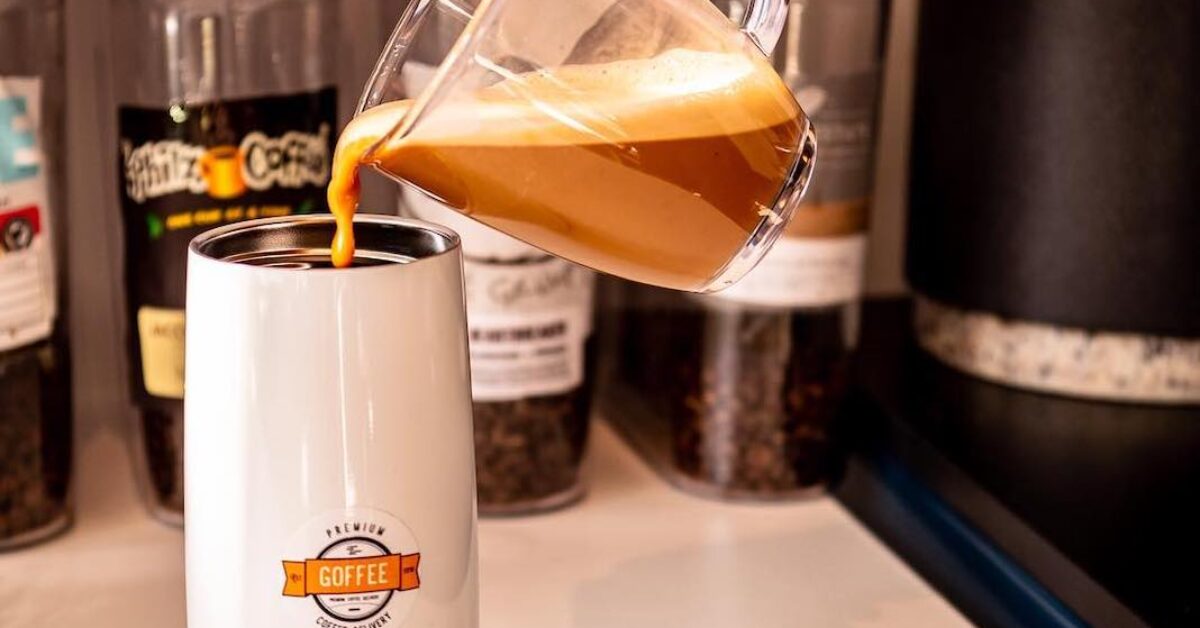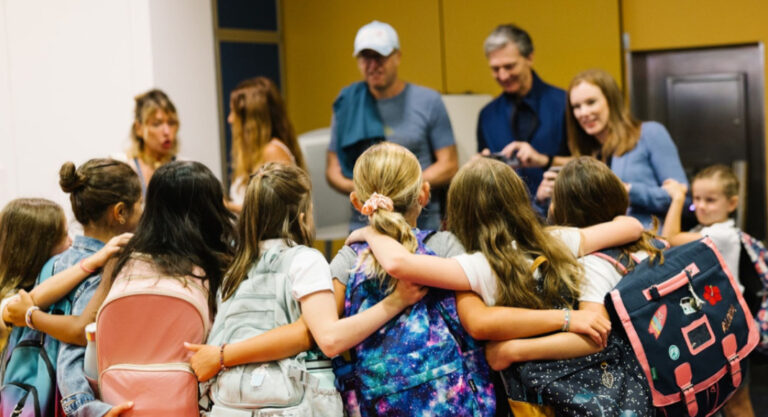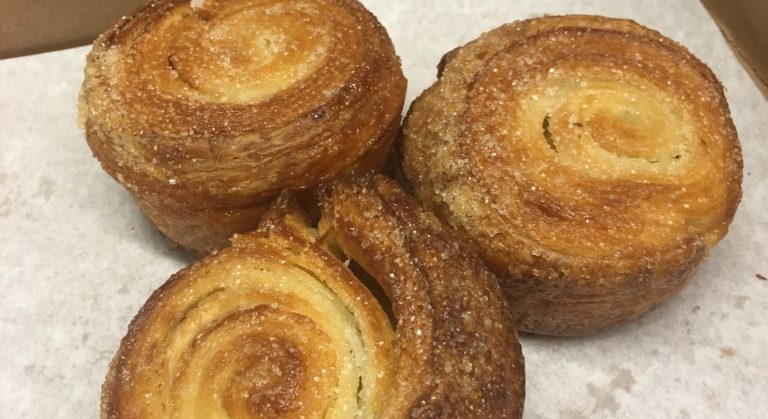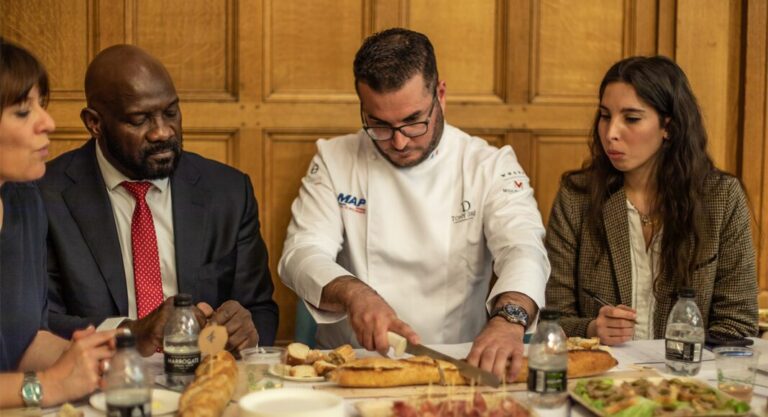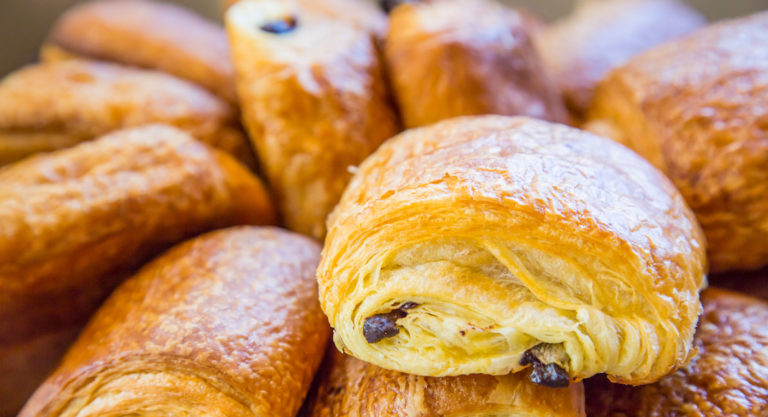“When I tell my friends that I’m getting into coffee delivery, they smile. They tell me, ‘you’ve never been a barista,’” smiles Vincent Meyer. And yet. At 33, this Frenchman from New York has just launched Goffee, a start-up that aims to revolutionize the delivery of coffee and tea in the United States, starting in New York.
Unlike delivery services such as Uber Eats or Seamless, the company makes coffee itself in a Midtown shop from beans used by well-known brands (Starbucks, Dunkin Donuts, Toby’s Estate…). People deliver them, on foot, in containers that look like water bottles that they come to collect the next day in order to avoid waste. “We deliver 250-300 mugs a day,” says the Parisian.
Before delivering the coffee, Meyer consumed a lot of it. In charge of opening international markets for Criteo at a time when the advertising targeting company had only about twenty employees, he launched the London office and then the Palo Alto office, where he went with founder Jean-Baptiste Rudelle in 2009. After the start-up’s initial public offering in 2013, the Frenchman decided to settle in New York. “There were 25 of us when I started and 1,400 when I went public. Jean-Baptiste decided to return to France. I was offered the opportunity to go back to France too, but I felt good in the United States.”
https://www.instagram.com/p/Bu3nDwFFSSz/
In the Big Apple, he worked as a developer in several companies, including Jump Ramp Games, the first lotto application. But he had an idea. When he ordered his coffees from Starbucks in advance through the app, he often found himself queuing up anyway with the rest of the people picking up coffee. “I was the best customer but at the same time the one who was treated the worst.” He also remembers a conversation in Palo Alto with the founder of Philz Coffee, his favourite coffee brand. He told Meyer that he would not open in New York, but that the Frenchman could order Philz’s beans online and make the coffee at home. “It rang a bell,” he recalls. “The difference between Starbucks, Dunkin or Philz is not in the method of preparation, but in their grains. However, 98% of these brands sell them through retail.” No need, therefore, to go to the store. The idea of making an online platform of coffees, deliverable at the time desired by the customer directly to his office, was born.
Another factor that prompted him to start was the poor quality of delivery by existing services, such as Uber Eats or GrubHub. “The cups used by coffee chains are not suitable for preserving heat or foam. In addition, there is an inflation in the price of coffee at the moment. We’ve come a long way from dollar coffee! Today coffee is more between $4-4.50, not including tips. Adding delivery costs significantly increases prices.”
To meet its challenges, Goffee’s coffee comes in sealed containers that preserve the temperature of the drink. The re-use of these “mugs” also reduces costs. In addition, Goffee does not charge delivery fees: coffees are brought directly into the office by the employees who prepare them. This model reduces operating costs while eliminating the need for customers to queue for their cappuccino or matcha. Another advantage of the business is that deliveries are very predictable (“you don’t change much coffee or the time you take it”), which makes it easier to manage production.

Goffee is currently only available to companies with a minimum of 20 employees in order to group orders. Its target audience: office managers who need to meet the increasingly diverse coffee needs of their employees. “The coffee budget of offices continues to increase. It’s the race for different options: black coffee, cold brew, espresso… The office manager sees the list of requests increase and knows that not everyone can be satisfied. We thought there was an angle for us,” explains Meyer.
To expand, Goffee wants to extend its service to the other floors of the office buildings it already serves and target other business districts. In order to facilitate delivery, it plans to open other preparation workshops elsewhere in the city. After having opened Midtown Manhattan, spaces Union Square and the Financial District are in the works. “No one has bet on this approach of doing both production and delivery. When you see the merger between DoorDash and Caviar, the DoorDash IPO, you think there is money in the delivery economy,” says Meyer. “We will have an interesting future, either by positioning ourselves on the margins of existing structures or by joining one.”

